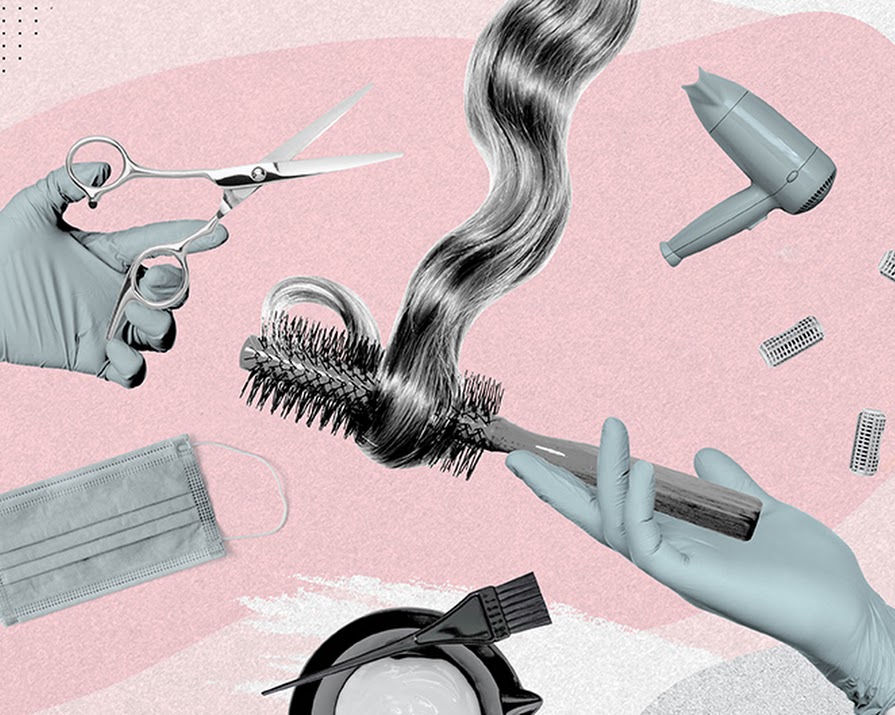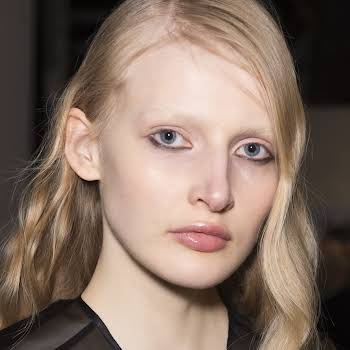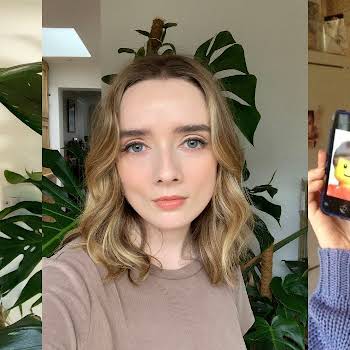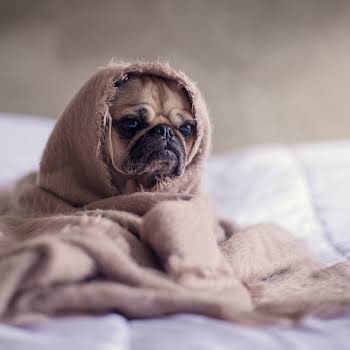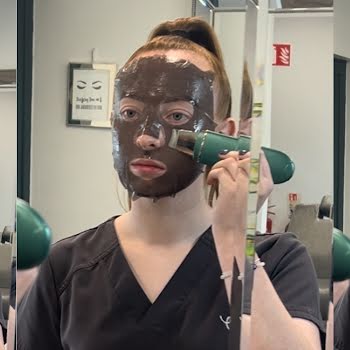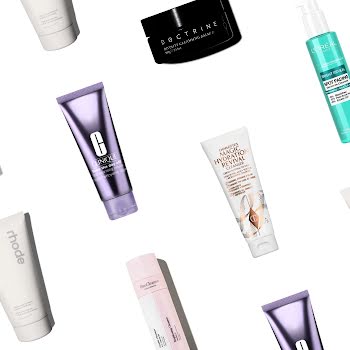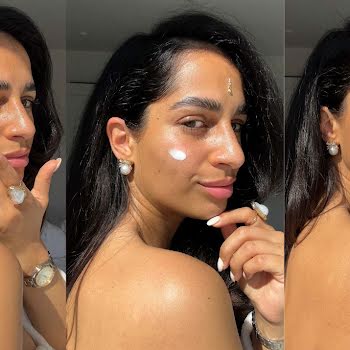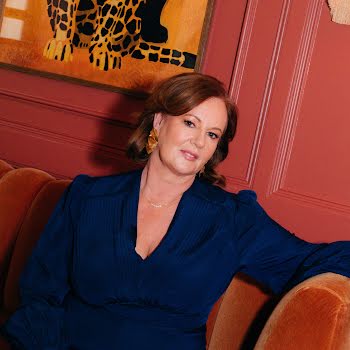
IMAGEWrites: Now that salons have FINALLY reopened, we celebrate the power of good hair
By Lucy White
03rd Jul 2020
03rd Jul 2020
Having a bad hair day? You’re not alone. During the pandemic we’ve resigned ourselves to looking disheveled – and can now give our unsung hairdressers the standing ovation they deserve
What’s the story, crowning glory?
At the beginning of the Netflix series, Self-Made, Octavia Spencer as America’s first black female millionaire Madame CJ Walker says: “Hair is beauty. Hair is emotion. Hair is a heritage. Hair tells us who we are, where we’ve been and where we’re going.”
Well, if Mme Walker were to see us all now she’d think we’d been through a hedge backwards – and going nowhere fast.
My hair is, or was, my pride and joy. It didn’t matter that I wasn’t blessed with cut-glass cheekbones, almond shaped eyes, lightly pillowy lips or an agreeably defined jawline; I could always get a sharp style and colour to detract from my shortcomings. Hair doesn’t gain or lose weight, get pimples, wrinkles, stretch marks or cellulite. Nor does it make your bum look big in this. It’s whatever you want it to be.
It is also the first thing we notice about each other. In eye-tracking studies, it is external factors (hair and face shape) that help us recognise people we’ve met for the first time, while internal parts (eyes, nose, mouth) help us recognise people we already know. Anyone who has had a terrible blow-out, cut or colour, will nod in recognition at the findings of a Yale University 20 years ago, revealing links between bad hair and self-esteem. And the figures were highest among the guys.
Self-esteem is why women spend around €350 per year per person on salon appointments – and that’s just for colour, according to a Living Proof study last year – and will consider dropping nearly 400 bucks on a Dyson Supersonic hairdryer. It’s why African-American women spend 86 per cent more on ethnic-targeted grooming aids than white women. It’s why some women are willing to risk the lives of others by offering their hairdressers’ three or four times their usual payment to secretly cut their lockdown locks. It’s why wigs exist for alopecia and cancer patients. Hair matters, not least when you no longer have it.
Little did we know earlier in the year, when the coronavirus seemed like a long-distant problem for other countries, that many of us would be literally counting down the days until hair salons reopen. JULY?! we would’ve scoffed, before nonchalantly adding a four-pack of Andrex to our shopping baskets. My last appointment was on February 21 and had I foreseen the swift shutdown, I’d have squeezed in one last hoorah at Toni & Guy without question.
Hairdressers are, effectively, magicians, and their scissors are their wands
Eyebrows, underarms and bikini lines can all be somewhat maintained at home. But head hair? Forget it. Hairdressers are, effectively, magicians, and their scissors are their wands. We’ve always known this, but now that are roots are four inches long and our fringe is in our eyes, we appreciate our hairdressers more than ever.
Hair hero
But it wasn’t until I saw a production shot of the silent movie star Louise Brooks in the 1929 film Pandora’s Box, that I met my hair hero, the bob of dreams
Once upon a time, long before influencers and reality TV- and sex-tape stars, women took their hair inspiration from music and film. My Good Hair poster girls of yore include a platinum-cropped Madonna (“Girlie Tour” era), Justine from Elastica (because Damon Albarn was madly in love with her so surely he could love me), Winona Ryder as per Reality Bites and Meg Ryan specifically in the film Addicted to Love, pictures of which I’d give to my hairdresser in the vain hope each strand would be doggedly replicated. It rarely went to plan as the sum of its parts: in fact my “Girlie Tour” crop was so short – and my then-wardrobe so zeitgeist androgynous – that I once got mistaken for a boy while in the art college dark room.
Much later I had something my boyfriend retrospectively refers to as “The Ellen Degeneres”, an ill-advised “Hoxton fin” and, as the last person in the world to discover straightening irons, frazzled an already Dubai-parched grown-out blonde-to-brunette abomination.
But it wasn’t until I saw a production shot of the silent movie star Louise Brooks in the 1929 film Pandora’s Box, that I met my hair hero, the bob of dreams. It took another few decades before I dared take the plunge, deciding la Brooks looked far too fabulous and sophisticated than scruffy old me could ever pull off. I’d intermittently had long hair, but with the texture being so fine, it goes entirely limp as soon as it tickles my shoulders, while a long, grown-out fringe resembles a combover. Besides, I’ve always loved the feminist statement of a bob.

The bob squad
In Paris in 1909, the celebrity hairdresser simply known as Antoine unveiled the “coupe à la Jeanne d’Arc”, a sensational pageboy bob inspired by Joan of Arc, who became a mascot for French troops during WWI. Antoine’s creation became a Europe-wide hit, in line with the trend for cloche hats, with Coco Chanel going for the chop in 1916.
Across the pond, the American ballroom dancer Irene Castle cut her hair liberatingly short in 1915, which became known as the Castle bob. It was deemed so scandalous that salons refused to copy such a daring, boyish look… which sent these urbane young women flocking to the barbershops instead, who were only too happy to capitalise on this explosive new trend.
Salons relented and, in fact, the avant-garde hairstyle helped create a spike in the number of ladies hairdressers opening, supplying the demand for the bob’s many iterations, including the finger wave, the Marcel, the shingle bob and the Eton crop.
So fashionable did the style become, F Scott Fitzgerald wrote a short story, Bernice Gets Her Hair Bobbed, for the Saturday Evening Post in 1920, and thus the flapper was born and, four years later, epitomised by his Daisy Buchanan of The Great Gatsby; the freewheeling It Girl with a penchant for the right to vote, work, smoke, drink, have sex before (and outside) marriage, drive automobiles and fly planes.
This newfound freedom among the world’s most liberal cities was short-lived, however, and conservatism creeped back after the Second World War, when men returned from the war and women were relegated to the home and child-rearing. It was no coincidence that longer, softer and more high maintenance styles made a comeback, such as victory rolls, the poodle clip (Lucille Ball) and the bubble bob (early era Jackie Kennedy).
It wasn’t until the Swinging Sixties that the bob went back to its radical Roaring Twenties roots, with haircuts going as wantonly short as the decade’s hemlines
Fashionable women in the 1950s and 1960s emulated Doris Day’s bouffant and the gamine Audrey Hepburn. But it wasn’t until the Swinging Sixties that the bob went back to its radical Roaring Twenties roots, with haircuts going as wantonly short as the decade’s hemlines. In 1963, Vidal Sassoon unveiled the sculptural five-point cut, – popularised by fashion designer Mary Quant and model du jour, Jean Muir – for the next generation of women’s libbers. Yet again, it was a sensation.
And so, apart from a few misguided attempts at trying to nurture a hairstyle capable of Veronica Lake waves (clue: not possible), I’ve embraced the bob in all its forms over a 30-year period and all the feminist history that comes with it. I finally succumbed to the short, glossy bob of dreams in 2011, smartened up my wardrobe, and never looked back. Or so I thought.
Louche lockdown locks
Relaxed clothes befit relaxed hair, so suddenly a power bob during lockdown while tramping about the home in Harry Styles-wide pyjama bottoms and a rotation of around four sweaters seems a tad incongruous. (That said, louche and long-line silhouettes were de rigueur among the flappers).
It’s a bit of an identity crisis, after so long of suppressing my inner Louise Brooks. On the one hand I feel like I’m betraying “the real me” by even considering sticking with a longer fringed, longer bob, to complement my slacker reboot. On the other, the Lockdown Me couldn’t be any more real if she tried. Few of us have been any more elemental since we were a child and permitted to wear tutus and dungarees and Wellington boots and beads and capes and polka dot leggings, all at once.
Stripped of societal conventions and professional expectations, most of us have relaxed our once-staunch nine-to-five grooming standards, the results of which are mostly sloppy and occasionally outlandish (who hasn’t had a little chuckle in front of the mirror at their motley ensemble to nip out for the milk?).
“Have you heard from the salon yet…?” we ask our inner circles gingerly, dreading being lower down on the pecking order
That we’re all in the same bedraggled boat is some comfort. But now, alongside the disappointment we feel every time we see our overgrown roots in the mirror, we feel fear. Fear that we’ve somehow been missed off the hair salon waiting list and it’ll be another month before we’ll be slotted in. “Have you heard from the salon yet…?” we ask our inner circles gingerly, dreading being lower down on the pecking order.
At least when we were trapped within our allocated 5km, no one saw quite how bad our hair was: where once was a fulsome crown, expertly graduated into my nape, is now a vertical drop and my once-blunt short bangs has morphed into confused curtains. Now we’re allowed to fraternise with up to six friends in each other’s gaffs, we can assess and compare the collective damage.
Cloak and bedraggled
I’ve fantasised of arriving at Toni & Guy after nearly five months of regrowth, group-hugging my stylist and colourist respectively, bottle of champagne in one hand and juggling three coupes with the other. But, sadly, we don’t live in an F Scott Fitzgerald novel. There’ll be no more leisurely leafing through magazines and sipping from teacups, both of which are banned for potentially spreading the virus. Any usual banter will be suppressed by face masks, while disposable cloaks and individual-use towels will be our body armour.
But most importantly, we must ensure we bestow these hair magicians with not just the best tips that our diminished pockets permit, but the biggest smizes our PPE face masks will allow.
But at least we’ll walk out like we’ve just stepped out of a salon. Because we have. After four. Long. Months.
“Wonderful hair leads to wonderful opportunities,” adds Octavia Spencer’s CJ Walker. But when you’re working remotely – if you’re lucky to have kept your job at all – opportunities seem very slim. But now we can see the light at the end of the four-phase tunnel, before the predicted second wave of infection, we’d better ensure we get a robust trim and the most fade-resistant colour the salon can offer so we don’t again end up with a two-tone travesty with face curtains.
But most importantly, we must ensure we bestow these hair magicians with not just the best tips that our diminished pockets permit, but the biggest smizes our PPE face masks will allow. In their absence, hairdressers have emerged as overlooked and undervalued essential workers, who keep our high streets and, crucially, our self-esteem, alive.
Read more: 5 Irish headpieces Lucy White is loving for bad hair days (and video conferencing)
Read more: IMAGEWrites: Turns out we weren’t really ‘dressing for ourselves’ all along
Read more: Hair Stories: Emma Dabiri on how her hair has shaped her life











